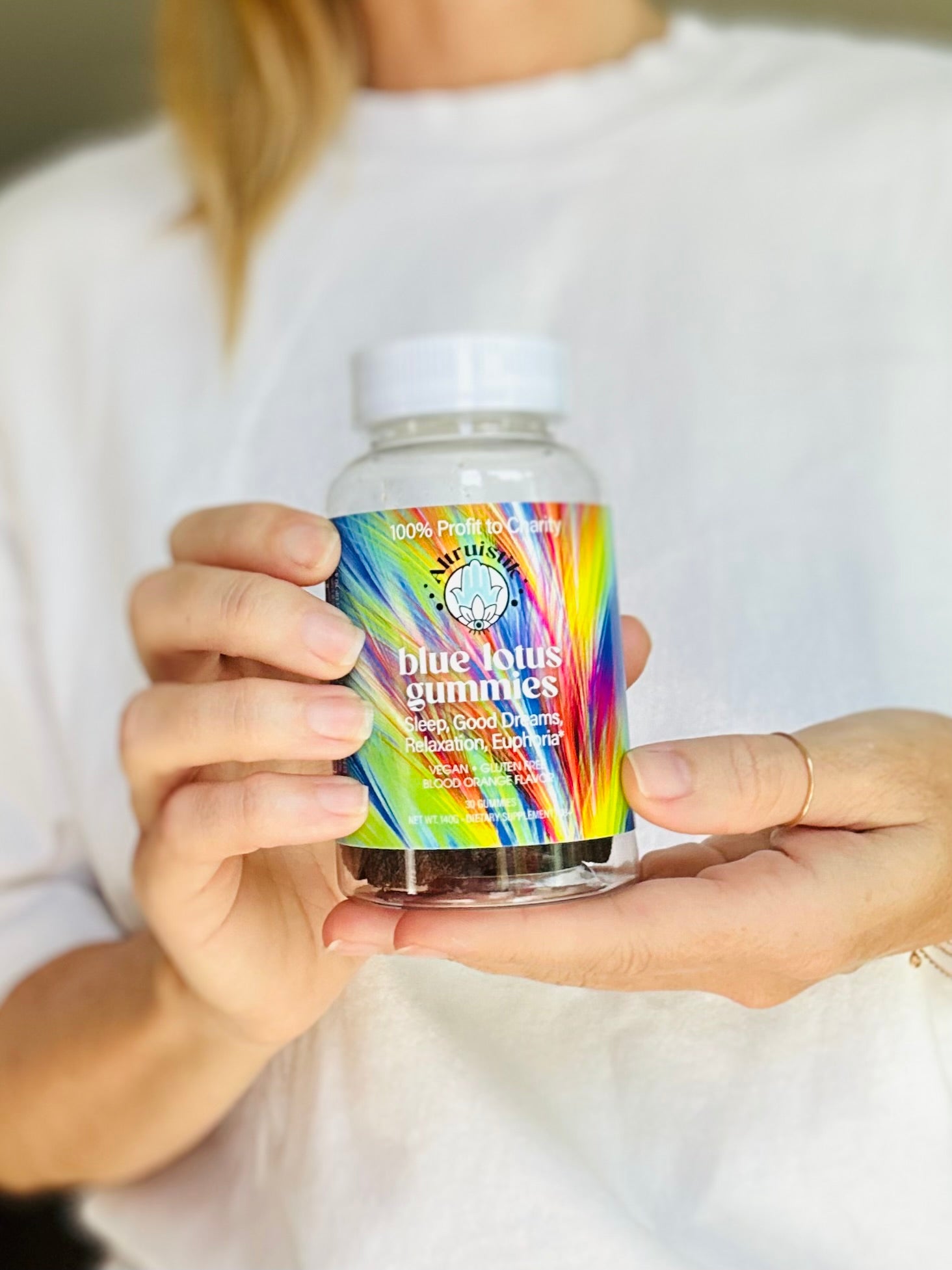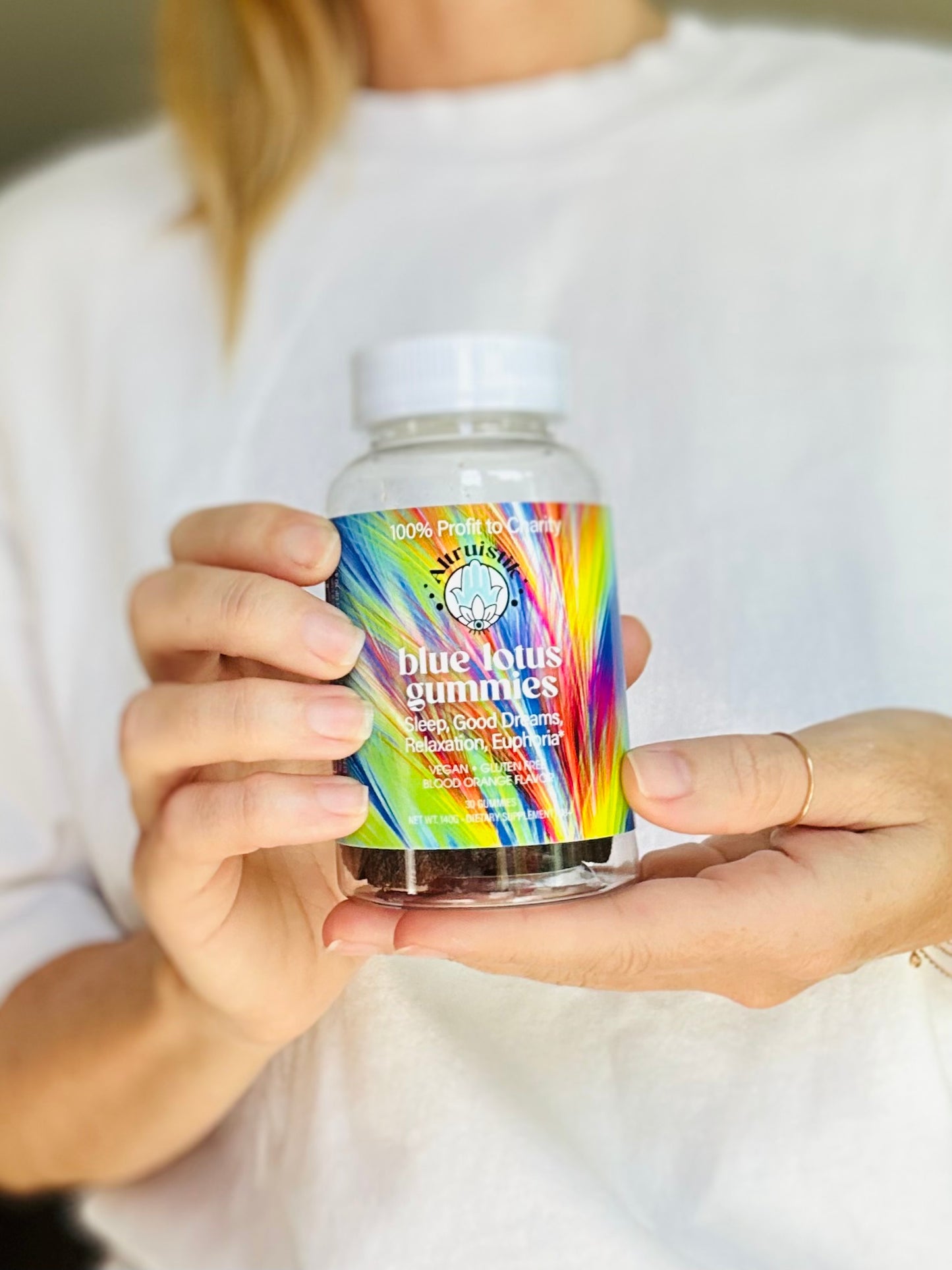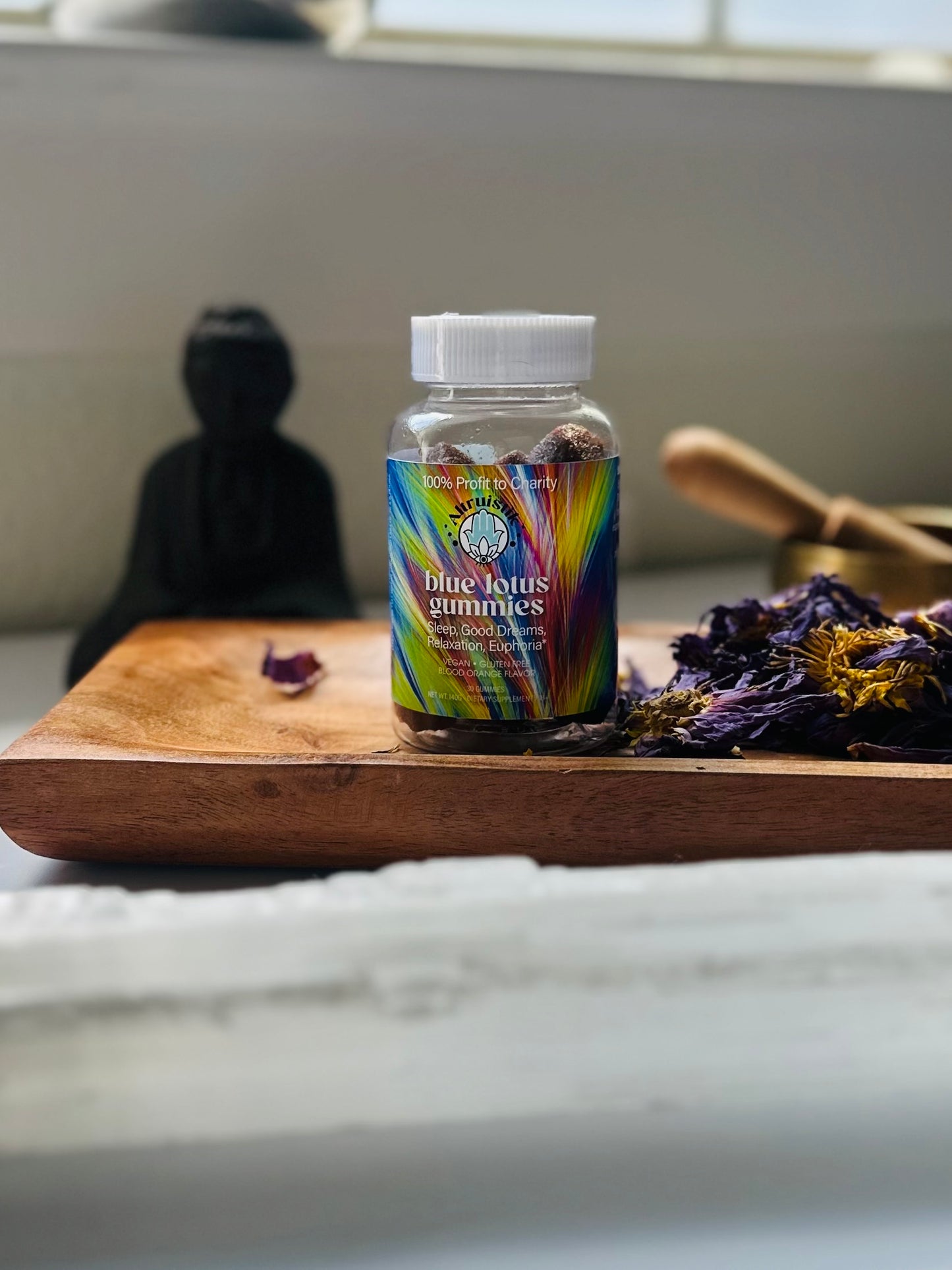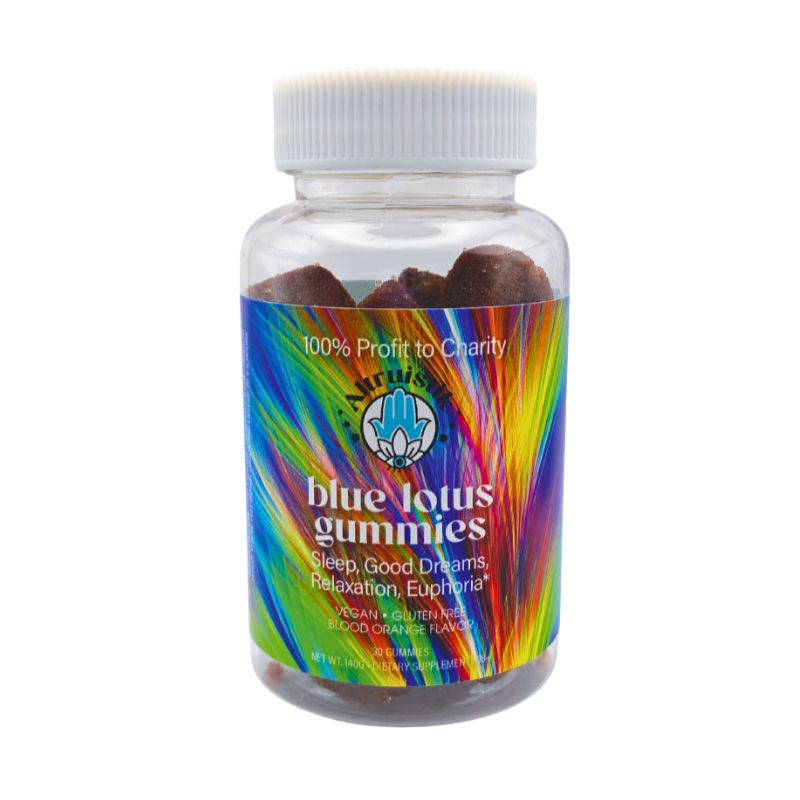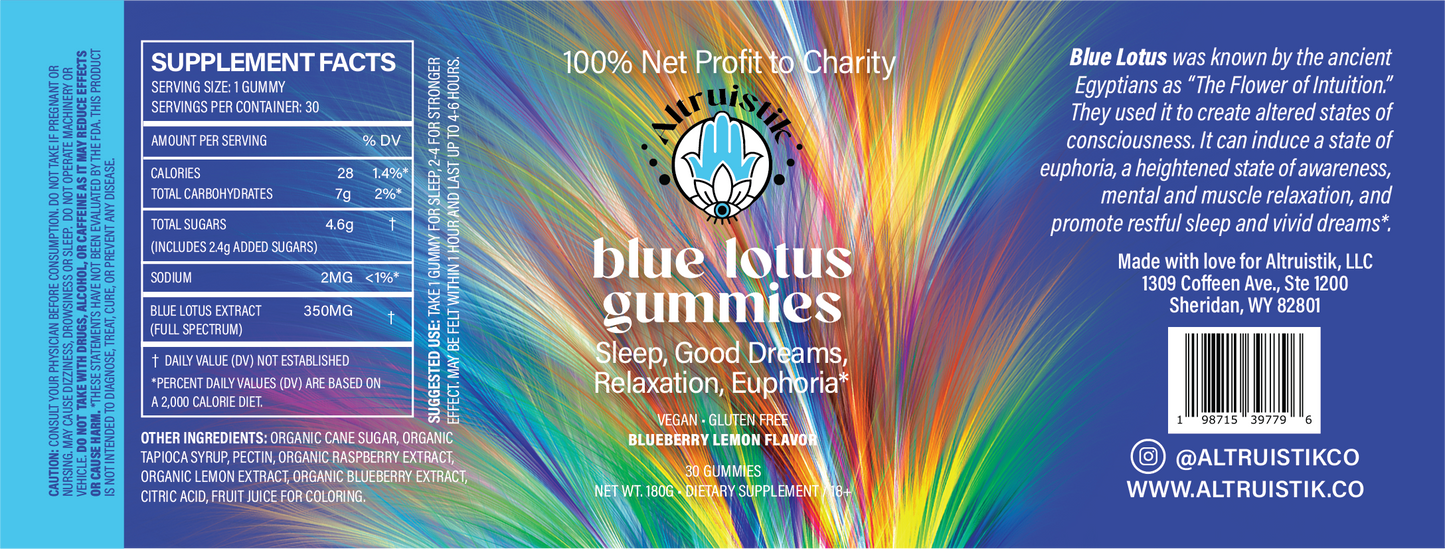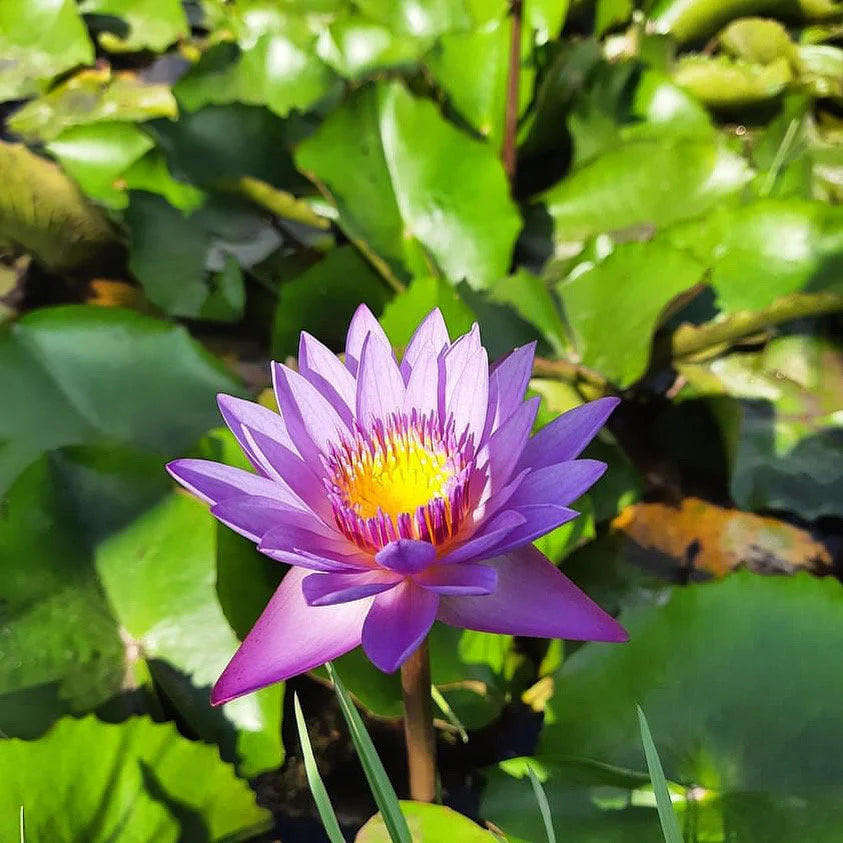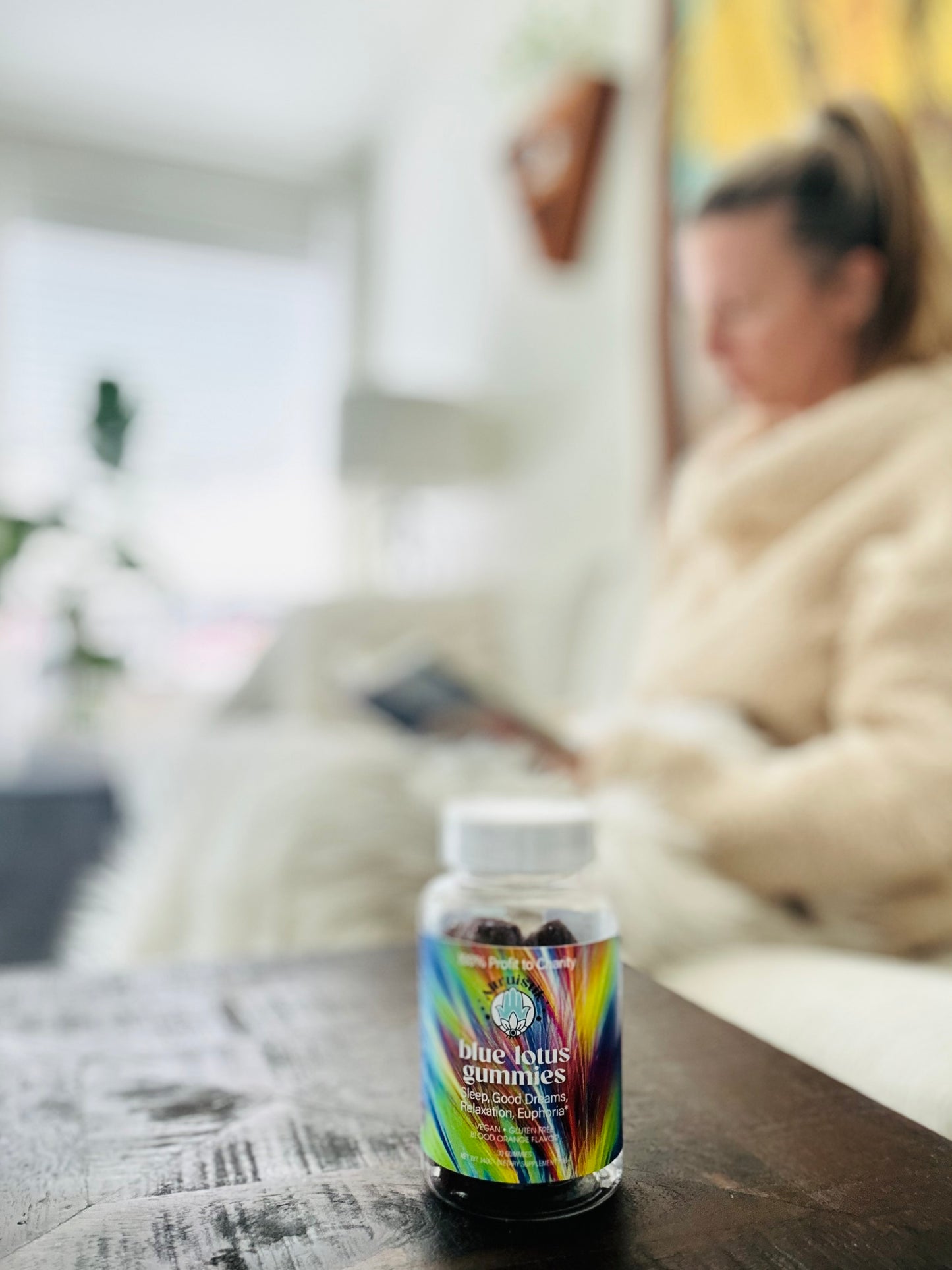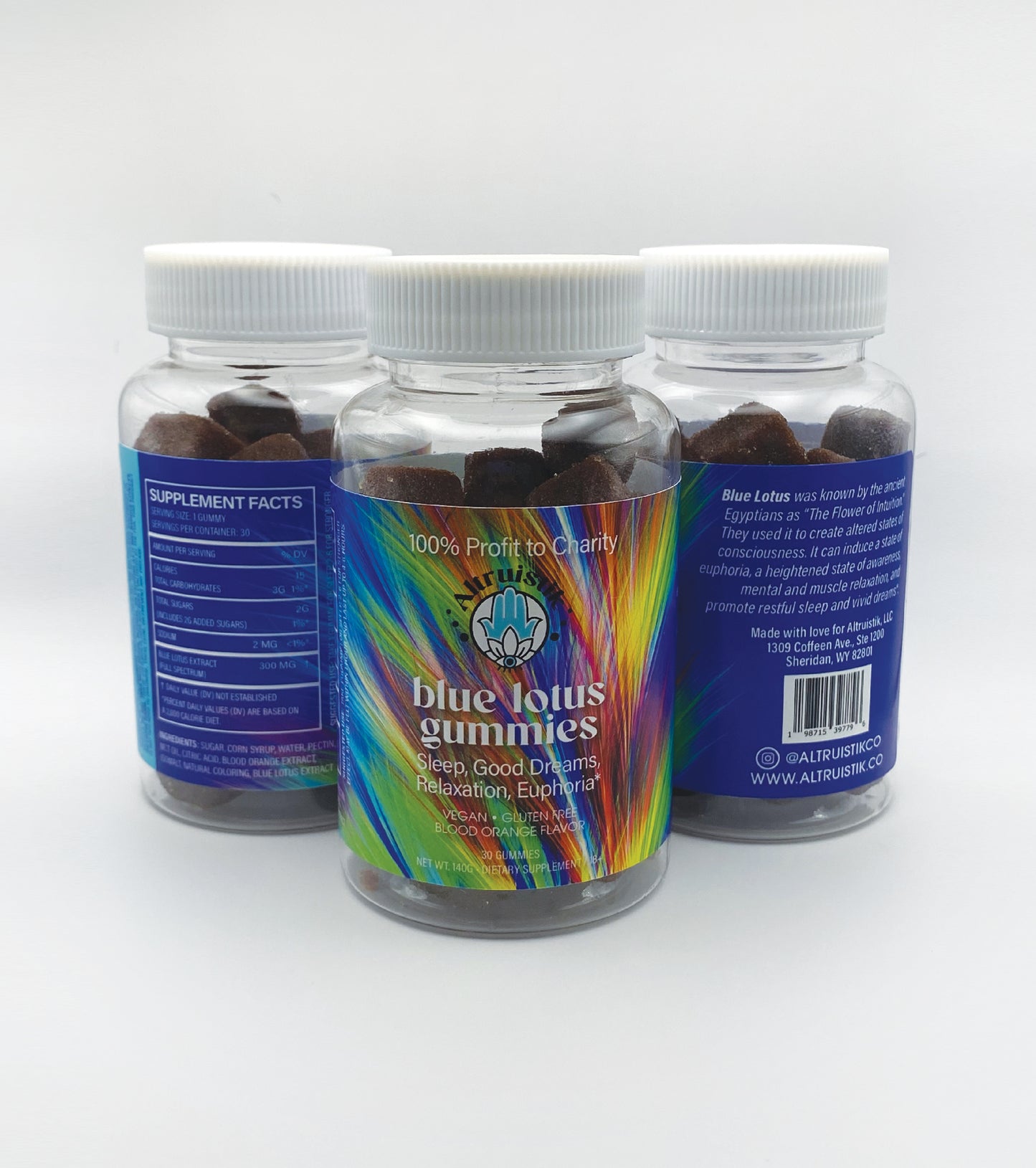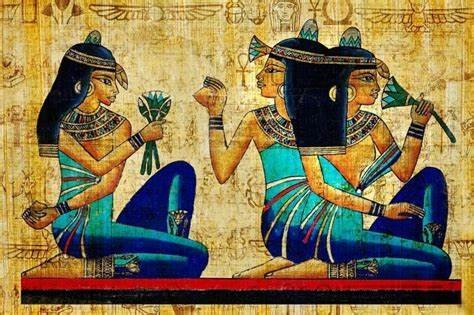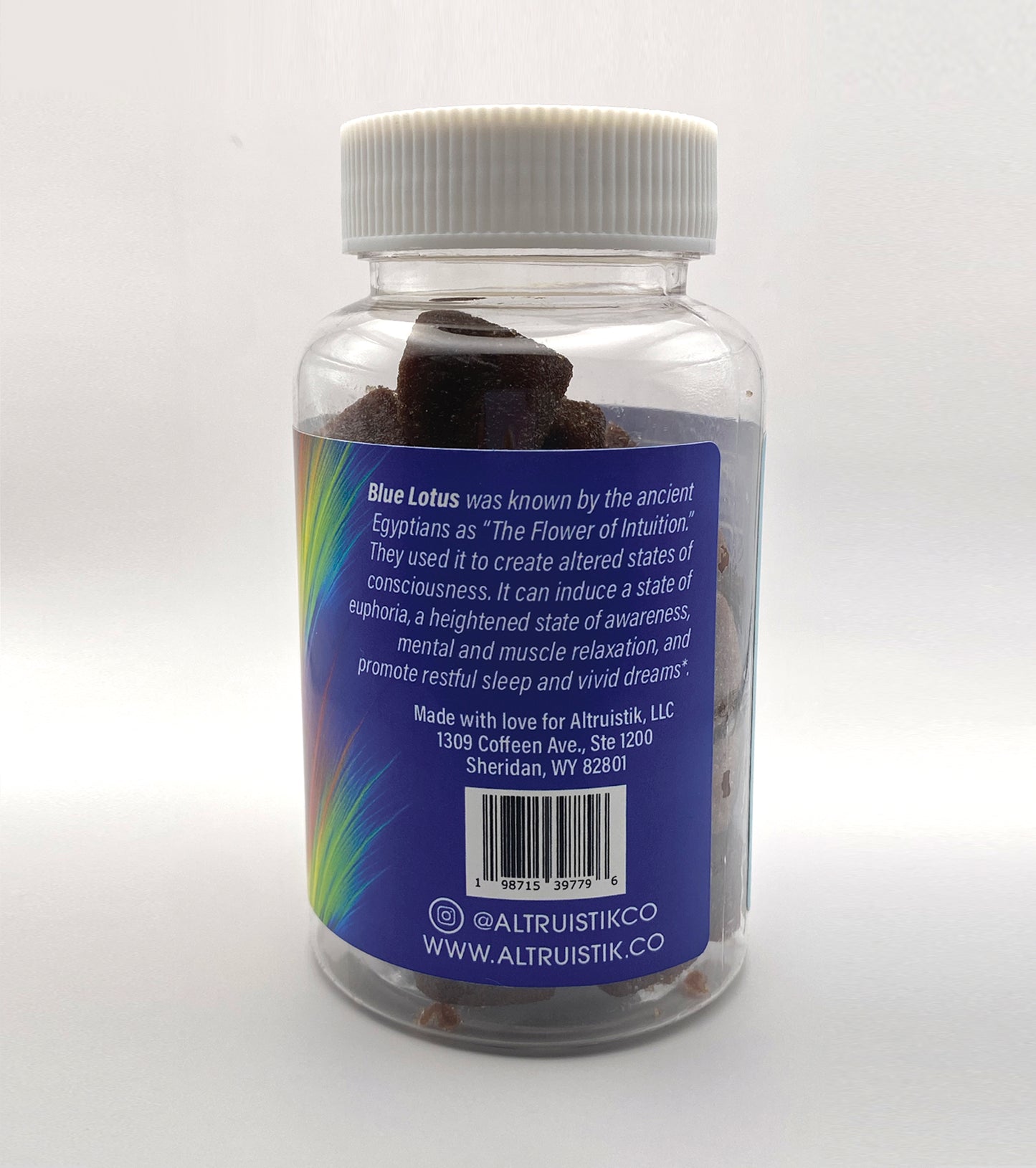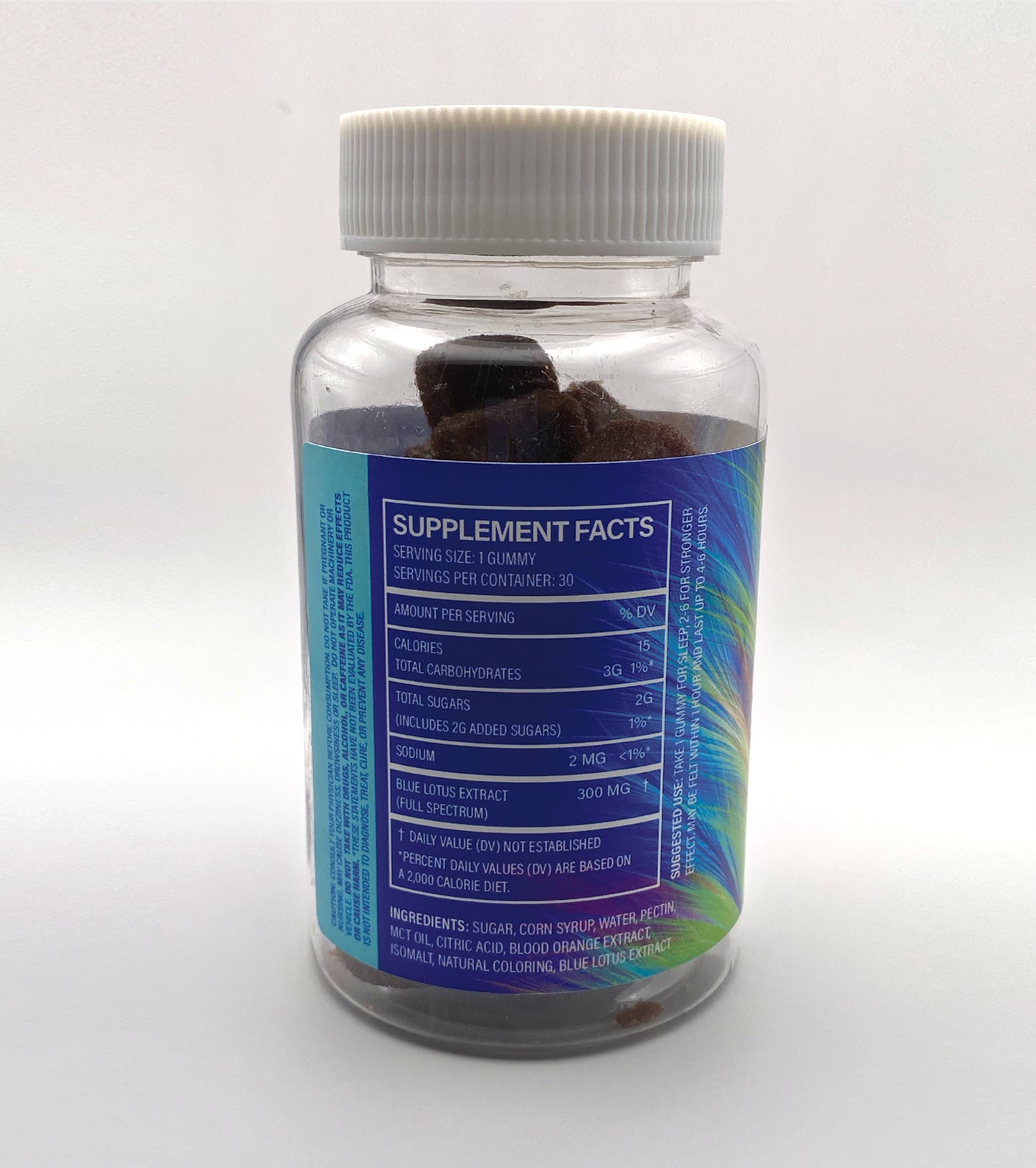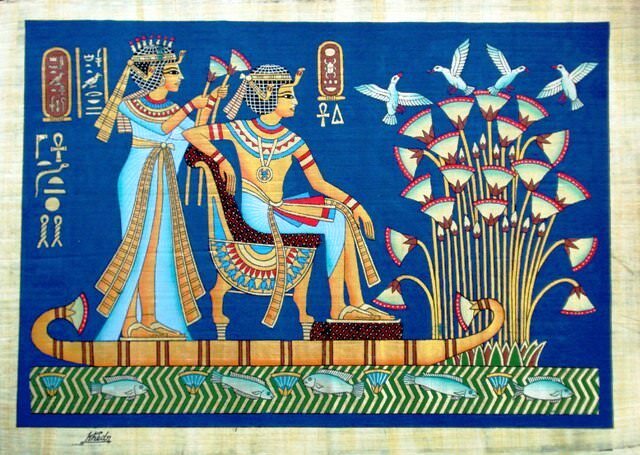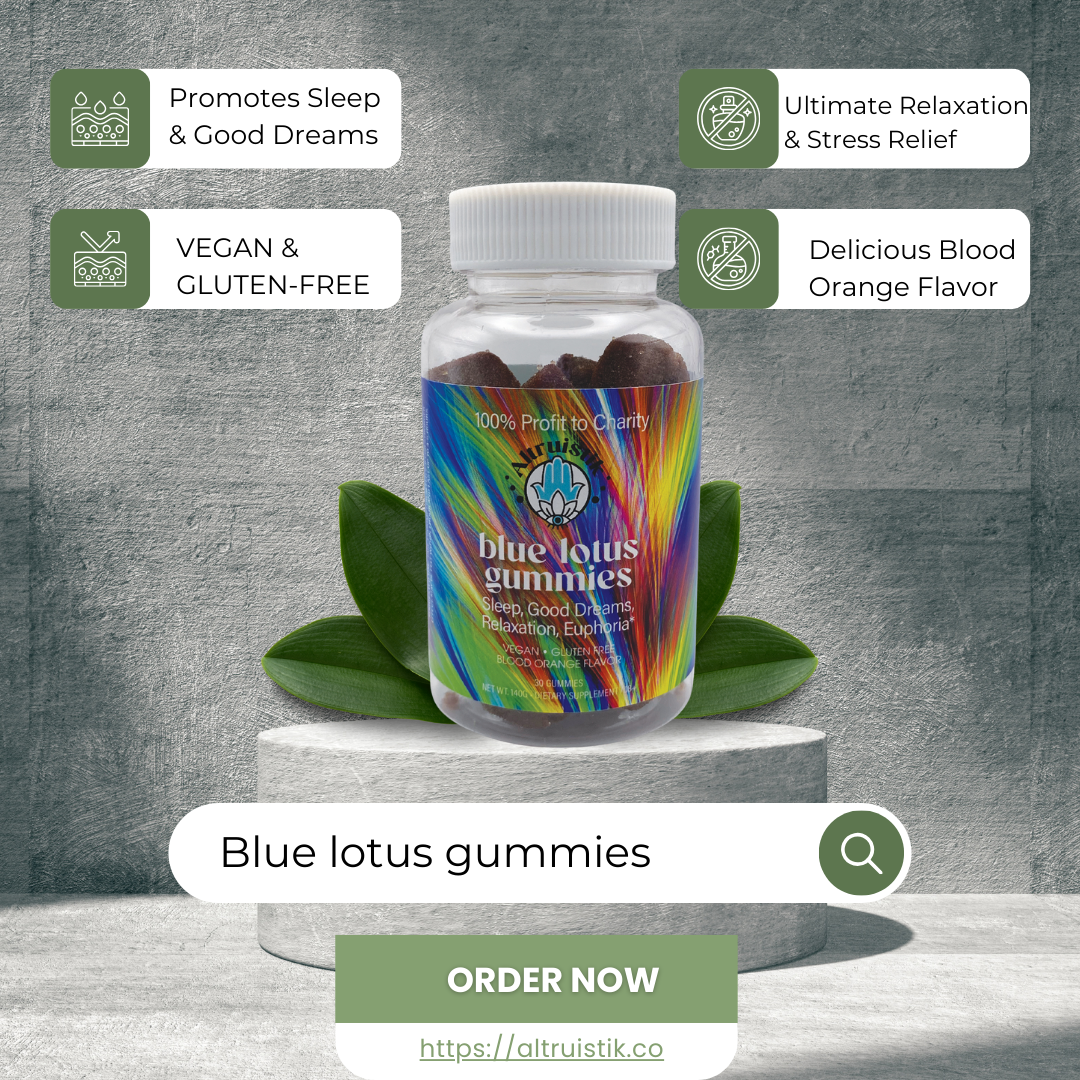Blue lotus, also known as Nymphaea caerulea, is a water lily long valued for its calming and mildly psychoactive effects. It has been used for centuries in traditional practices to promote relaxation, enhance mood, and support restful sleep.
Today, it is available in forms such as tea, extracts, and vape liquids, making it accessible for both traditional and modern uses.

This flower held symbolic and spiritual importance in ancient Egypt, often linked to themes of rebirth, wisdom, and ritual ceremonies. Its natural compounds can produce gentle euphoria and a sense of tranquility, which explains its continued popularity.
While some use it for its potential aphrodisiac properties, others seek it for its soothing effects on the mind and body. Modern interest in blue lotus has led to more research on its safety, benefits, and legal status.
Key Takeaways
- Blue lotus has a long history of cultural and ceremonial use
- It may promote relaxation, mood enhancement, and better sleep
- Safe use depends on dosage, preparation, and local regulations
What Is Blue Lotus?

Blue lotus is a water plant known for its historical use in ancient Egypt and parts of Africa. It has been valued for its appearance, fragrance, and mild psychoactive properties linked to certain natural compounds.
Scientific research identifies its species, chemistry, and ways to verify authentic material.
Botanical Classification and Species
The blue lotus flower comes from the species Nymphaea caerulea, also called the Egyptian blue lotus or blue water lily. It belongs to the family Nymphaeaceae, which includes several water lily species.
This plant grows in slow-moving rivers, ponds, and lakes. It thrives in warm climates and produces large, blue to violet petals with a yellow center.
It is different from the Nelumbo nucifera (sacred lotus), which is a separate genus. Confusion often occurs because both plants are called “lotus” in common language.
The true blue lotus has floating leaves and flowers that rise slightly above the water surface. Ancient Egyptian art often depicts Nymphaea caerulea in religious and ceremonial contexts.
It was linked to the sun god and symbols of rebirth.
Key Active Compounds
Blue lotus contains several bioactive compounds, most notably the alkaloids nuciferine and apomorphine.
- Nuciferine is an alkaloid that may have mild sedative effects.
- Apomorphine is a dopamine receptor agonist with potential mood and relaxation effects.
These compounds are present in the petals and stamens. They are soluble in alcohol, which is why tinctures and infused wines have been traditional preparation methods.
The concentration of active compounds can vary based on plant origin, harvest time, and storage. Dried flowers may lose potency if stored improperly or exposed to moisture and light.
While some users report calming or mildly euphoric effects, research on safety and pharmacology is still limited.
Distinguishing Authentic Blue Lotus
Authentic blue lotus should be identified by its botanical name Nymphaea caerulea. Products labeled simply as “lotus” may be from unrelated species.
Key identifiers include:
- Petals in shades of pale to deep blue with a yellow center
- Floating, round leaves with smooth edges
- Mild, sweet floral scent when dried
Some sellers substitute Nymphaea nouchali or Nelumbo nucifera, which differ in appearance and chemistry.
Buyers should check for lab testing or supplier transparency to confirm species identity. Whole dried flowers are easier to verify visually than powders or extracts.
Historical and Cultural Significance

Blue lotus (Nymphaea caerulea) has been valued for thousands of years for its role in religion, art, and daily life. Its presence in ancient records shows it was more than an ornamental plant, serving symbolic, ceremonial, and medicinal purposes across different cultures.
Ancient Egypt and the Pharaohs
In ancient Egypt, the blue lotus appeared in tomb paintings, temple carvings, and papyrus scrolls dating back to at least the 14th century BCE.
Pharaohs and nobles often depicted themselves holding the flower, suggesting high status and divine favor. Scenes show the plant floating on the Nile or presented in ritual offerings.
It was linked to the sun god Ra because its blooms opened in the morning and closed at night, symbolizing the cycle of life and rebirth. The flower was also found among burial goods, possibly as part of funerary rites intended to guide the soul.
Symbolism and Spiritual Practices
The blue lotus held strong associations with spiritual awakening and transcendence. Its daily blooming cycle made it a natural symbol for creation, regeneration, and purity.
In temple rituals, it was sometimes infused into wine or water. Historical accounts suggest it may have been used in ancient healing practices to promote calmness and clarity.
Art from both Egypt and neighboring regions often portrays deities seated or standing atop the flower, reinforcing its sacred role. The plant’s fragrance and appearance were also valued in meditative and celebratory settings, where it served as a focus for spiritual practices.
Modern Rediscovery
Today, the blue lotus has regained attention through archaeology, ethnobotany, and alternative wellness communities.
Researchers have identified its historical uses and chemical composition, noting the absence of significant amounts of psychoactive alkaloids in authentic extracts.
Modern interest often focuses on relaxation, mild mood enhancement, and decorative cultivation. While some products are marketed for spiritual or meditative purposes, many are ornamental or used in perfumery.
Its renewed presence in art, literature, and cultural events reflects a continued fascination with this ancient flower.
Health Benefits of Blue Lotus
Blue lotus contains natural compounds that may influence the nervous system and emotional state. It has been used in teas, tinctures, and aromatherapy to promote a calm mind, improve mood, and support focus during mental tasks.
Relaxation and Stress Relief
Blue lotus is known for its calming properties. Some of its active compounds, such as aporphine, may interact with receptors in the brain linked to relaxation.
People often consume it as a tea or use it in aromatherapy to help ease mild stress. Its gentle sedative effect can make it easier to unwind after a busy day.
Unlike stronger sedatives, blue lotus does not usually cause heavy drowsiness. This makes it appealing for those seeking stress relief without feeling overly tired.
Common uses for relaxation:
- Evening herbal tea
- Bath infusions
- Aromatherapy oils
Mood Enhancement and Euphoria
Certain alkaloids in blue lotus may influence dopamine activity, which can affect mood. Some users report a light sense of euphoria or emotional uplift after consumption.
This effect is often described as mild and short-lasting. It may help reduce feelings of low mood or emotional tension without overstimulation.
When used in moderate amounts, blue lotus can create a pleasant, balanced state. It is sometimes used in social or meditative settings for this reason.
Potential mood-related effects:
- Increased sense of well-being
- Mild emotional warmth
- Reduced irritability
Support for Mental Clarity
Blue lotus has been traditionally used to aid focus and mental presence. Its relaxing qualities may help reduce mental distractions, allowing for improved mental clarity during tasks that require attention.
By lowering stress levels, it may indirectly support better decision-making and concentration. Some people use it before reading, studying, or meditation to stay mentally engaged without feeling tense.
Its effects on clarity appear to be subtle, working more through relaxation than direct stimulation. This makes it suitable for activities that require calm, steady focus rather than intense alertness.
Situations where it may help clarity:
- Meditation practice
- Light creative work
- Journaling or reflection
Effects on Sleep and Insomnia
Blue lotus contains active compounds, such as nuciferine, that may influence brain receptors linked to relaxation and sleep regulation. Some research and historical use suggest it can promote drowsiness, reduce anxiety, and support more restful sleep patterns.
Its effects appear mild compared to prescription sedatives but may still be noticeable for some users.
Sleep Support and Insomnia Relief
Blue lotus has been traditionally used as a natural aid for people who have trouble falling asleep or staying asleep. Its sedative-like effects are linked to compounds that may act on serotonin and dopamine systems, which influence mood and sleep cycles.
Some animal studies suggest nuciferine can extend sleep duration and improve sleep quality in insomnia models. These effects may come from its ability to modulate neurotransmitters and reduce overactive brain signaling.
Users often report feeling calmer and less anxious after consuming blue lotus tea or extracts. Reduced anxiety can make it easier to transition into sleep, especially for those whose insomnia is stress-related.
Forms of use include:
| Form | Common Use Time | Notes |
|---|---|---|
| Tea | Evening | Mild taste, gradual onset |
| Tincture/Extract | 30–60 min before bed | Faster absorption |
| Smoking/Vaping | Night | Quick onset, shorter duration |
Dream Enhancement
In addition to promoting sleep, some users claim blue lotus affects dream vividness and recall. This may be due to its mild psychoactive properties, which could influence REM sleep phases where most dreaming occurs.
Historical records from ancient Egypt describe its use in rituals that valued altered states of consciousness, possibly linked to dream experiences. While modern evidence is limited, anecdotal reports continue to describe more colorful and memorable dreams after use.
The effect on dreams may vary depending on dose, preparation method, and individual brain chemistry. Tea and tinctures are more often reported to produce subtle changes, while inhalation methods may create a stronger impact on dream intensity.
Some users note that these dream effects fade if blue lotus is used frequently, suggesting the body may adapt to its active compounds over time.
Psychoactive Properties and Effects
Blue lotus (Nymphaea caerulea) contains alkaloids such as nuciferine and apomorphine that can influence brain activity. These compounds may produce mild changes in mood, relaxation, and perception, and have been studied for their interaction with neurotransmitter systems.
Psychoactive Effects and Consciousness
The psychoactive properties of blue lotus are linked mainly to nuciferine and apomorphine. Nuciferine is reported to have sedative and calming effects, while apomorphine can act as a dopamine receptor agonist in certain contexts.
When consumed as tea, tincture, or smoke, users often describe mild euphoria, relaxation, and a dream-like state. These effects are typically subtle compared to stronger psychoactive substances.
Some historical accounts suggest its use in ancient Egypt for ritual or social settings. Modern users may take it as a sleep aid or to reduce anxiety.
However, its potency can vary greatly depending on preparation and plant quality.
Commonly reported effects include:
- Light sedation
- Reduced anxiety
- Altered dream recall
- Mild changes in perception
Dopamine and Neurotransmitter Interaction
Apomorphine in blue lotus can stimulate certain dopamine receptors in the brain. Dopamine is a neurotransmitter involved in motivation, reward, and mood regulation.
This interaction may partly explain the plant’s mood-lifting and calming effects. Nuciferine may act differently, possibly blocking or modulating some dopamine receptor activity, which could contribute to its sedative qualities.
This dual action—stimulation by apomorphine and modulation by nuciferine—creates a complex neurochemical profile. Other neurotransmitters, such as serotonin, may also be indirectly affected, though research is limited.
Laboratory studies have found that authentic blue lotus extracts often contain very low concentrations of these alkaloids, which may reduce noticeable psychoactive effects in some preparations.
The balance of these compounds, along with dosage and method of intake, plays a key role in the plant’s overall psychoactive impact.
Uses and Methods of Consumption
Blue lotus is prepared in several ways that affect its flavor, potency, and intended purpose. The most common forms include hot water infusions, alcohol-based extracts, and aromatic preparations.
Each method offers different strengths, storage needs, and ease of use.
Blue Lotus Tea
Blue lotus tea is made by steeping dried petals or whole flowers in hot water. This method draws out water-soluble compounds, giving the tea a mild floral taste and light golden color.
The tea is typically brewed for 5–10 minutes using water just below boiling. Longer steeping can produce a stronger flavor but may also increase bitterness.
Some people combine blue lotus with other herbs to balance the taste. It is usually consumed warm, but it can also be cooled and served over ice.
Because tea contains only water-extracted compounds, it is generally considered less concentrated than tinctures or extracts. This makes it a preferred choice for those seeking a lighter preparation.
Tinctures and Extracts
Tinctures are alcohol-based solutions made by soaking blue lotus petals or flowers in ethanol or another high-proof spirit. This process extracts both water-soluble and alcohol-soluble compounds, resulting in a more concentrated product.
A typical tincture dosage is measured in drops or milliliters, often diluted in water or juice before consumption. The strength depends on the ratio of plant material to alcohol and the length of extraction time.
Blue lotus extracts may also be sold as powders or resins. These can be mixed into beverages, encapsulated, or used in other formulations.
Extracts are valued for their longer shelf life and precise dosing. Proper labeling and storage away from heat and light help maintain potency.
Alcohol-based tinctures can often last for several years if stored correctly.
Aromatherapy Applications
In aromatherapy, blue lotus is used in the form of essential oil or infused oil. The oil is typically derived through solvent extraction rather than steam distillation, as the plant’s aromatic compounds are delicate.
It may be added to diffusers, massage oils, or baths. The scent is described as sweet and floral, with subtle earthy notes.
Aromatherapy use focuses on its fragrance rather than ingestion. Blue lotus oil is usually diluted with a carrier oil before skin application to reduce the risk of irritation.
Because essential oils are highly concentrated, only small amounts are needed for noticeable aroma. Proper storage in dark glass bottles helps preserve the fragrance quality over time.
Potential Aphrodisiac and Sexual Health Effects
Blue lotus (Nymphaea caerulea) has a long history of use in herbal traditions for its calming and mood-enhancing effects. Some historical and experimental reports also link it to sexual health, particularly in relation to libido and erectile function.
Traditional Aphrodisiac Uses
Ancient Egyptian records and artwork show blue lotus in contexts linked to intimacy and pleasure. It was sometimes infused in wine or prepared as a tea during social and ceremonial gatherings.
Historical accounts suggest that people valued it for mild euphoria, relaxation, and enhanced sensory perception, which may have contributed to its reputation as an aphrodisiac.
In traditional medicine, blue lotus was also combined with other botanicals thought to support sexual vitality. While modern chemical analyses show that active alkaloids like apomorphine are often absent in commercial extracts, historical use likely relied on fresh or differently processed plant material.
Today, some users still prepare blue lotus in teas, tinctures, or smoke blends for similar purposes. However, scientific evidence confirming direct effects on sexual desire in humans remains limited.
Erectile Dysfunction Support
Some animal studies have examined related species of Nymphaea for potential effects on sexual performance. For example, research on Nymphaea lotus in hypertensive male rats found improvements in measures linked to erectile function.
Possible mechanisms include increased blood flow, mild muscle relaxation, and stress reduction — factors that can influence erectile dysfunction (ED).
There is no strong clinical evidence in humans that blue lotus directly treats ED. Most available data come from laboratory or animal models, which may not translate to human outcomes.
Users interested in ED support should note that product quality varies. Authentic extracts may differ in chemical composition, and some may lack the compounds historically associated with sexual effects.
Safety, Side Effects, and Precautions
Blue lotus (Nymphaea caerulea or Nymphaea lotus) contains alkaloids and other compounds that can affect the nervous system. Its effects vary with dose, preparation, and individual sensitivity, and it may cause mild to moderate reactions in some users.
Possible Side Effects
Mild drowsiness is one of the most reported effects, especially when taken in higher amounts or combined with alcohol. Some users also experience lightheadedness, dry mouth, or mild nausea.
Animal studies on related species suggest that high doses may affect liver function and blood chemistry, though these effects were dose- and sex-dependent.
In rare cases, prolonged or heavy use may cause changes in mood or alertness. People should avoid activities that require full attention, such as driving, after consumption.
Potential side effects may include:
- Drowsiness or sedation
- Nausea or upset stomach
- Dry mouth
- Light dizziness
Those with known liver conditions should use caution, as some compounds in blue lotus may alter liver enzyme activity in sensitive individuals.
Drug Interactions and Contraindications
Blue lotus may interact with sedatives, alcohol, and other central nervous system depressants, increasing drowsiness and slowing reaction time. It may also enhance the effects of certain anti-anxiety or sleep medications.
Individuals taking prescription drugs for mood disorders, seizures, or high blood pressure should consult a healthcare provider before use.
It is not recommended for pregnant or breastfeeding women, as safety data is lacking. People with liver disease, low blood pressure, or a history of substance sensitivity should avoid it or use under medical supervision.
Avoid combining with:
- Alcohol
- Benzodiazepines
- Opioids
- Antihistamines with sedating effects
Careful dosing and awareness of personal tolerance can reduce the risk of unwanted interactions or side effects.
Legal Status and Regulation
Blue lotus (Nymphaea caerulea) is sold in many forms, including dried flowers, teas, tinctures, and vape liquids. Its legal treatment varies by country, and product safety depends on how it is processed and labeled.
Global Legal Overview
In many countries, blue lotus is not scheduled as a controlled substance. This means it can often be sold and purchased legally for personal use.
In the United States, it is legal at the federal level but not approved for human consumption by the FDA. Some regions regulate it under broader laws on psychoactive plants.
For example:
| Country/Region | Legal Status |
|---|---|
| United States | Legal to sell; not FDA-approved for consumption |
| Romania | Banned as a psychoactive plant |
| UK | Legal unless marketed for human consumption under certain laws |
Import restrictions may also apply. Customs agencies can seize shipments if they are mislabeled or suspected of containing other controlled substances.
Product Quality and Authenticity
Blue lotus products are often marketed as herbal supplements or incense to avoid stricter regulation. This labeling can make it harder for buyers to know the true contents or strength.
Testing has found that some products contain synthetic cannabinoids or other additives not listed on the packaging. These can cause unexpected effects and may be illegal.
Consumers can reduce risk by:
- Buying from suppliers with third-party lab testing
- Checking for clear botanical names (e.g., Nymphaea caerulea)
- Avoiding products with vague or misleading ingredient lists
Because regulation is inconsistent, quality varies widely between brands and countries.
Modern Research and Future Perspectives
Recent studies on blue lotus focus on its chemical makeup, possible therapeutic uses, and safety profile. Researchers are examining both traditional uses and modern applications, with interest in its effects on mood, relaxation, and cognitive function.
Ongoing Studies and Clinical Evidence
Blue lotus (Nymphaea caerulea) contains alkaloids such as nuciferine and aporphine. These compounds are being studied for their potential sedative and mild psychoactive effects.
Laboratory analysis has confirmed antioxidant and anti-inflammatory properties, though most findings come from in vitro or animal studies. Human clinical trials remain limited.
Small-scale observational studies suggest possible benefits for relaxation and sleep quality. However, the lack of standardized extracts and dosage guidelines makes it difficult to compare results across research groups.
Researchers are also investigating interactions with neurotransmitter systems. Early evidence indicates that nuciferine may influence dopamine and serotonin pathways, which could explain some of its reported calming effects.
| Research Focus | Current Status | Limitations |
|---|---|---|
| Antioxidant activity | Lab-confirmed | No large human trials |
| Sedative effects | Observational reports | No dosage standardization |
| Neurotransmitter interaction | Early lab evidence | Needs clinical validation |
Potential for Mental Health Applications
Interest in blue lotus for mental health stems from its historical use as a calming and mood-supporting plant. Some studies suggest it may help reduce mild anxiety or promote relaxation without strong sedative effects.
Researchers are exploring its role as a complementary approach rather than a primary treatment. This includes potential use alongside mindfulness practices, herbal blends, or low-dose pharmacological therapies.
Preliminary findings point to possible benefits for stress-related sleep disturbances and mild mood imbalances. However, the absence of well-controlled human trials means any mental health claims remain tentative.
Future research may focus on defining safe, effective doses and identifying which mental health conditions could benefit most from its use.
Frequently Asked Questions
Blue lotus has been used for centuries in herbal practices, ritual contexts, and as a mild relaxant. It is known for its historical symbolism, possible calming effects, and varied methods of preparation.
What are the potential health benefits of consuming blue lotus?
Some people use blue lotus for its relaxing and mood‑supporting properties. It may promote a sense of calm and help with mild restlessness.
Research on its health effects is limited. Most evidence comes from traditional use rather than clinical studies.
Can blue lotus have psychoactive effects, and if so, what are they?
Blue lotus can produce mild psychoactive effects when consumed in certain forms. Users have reported gentle euphoria, relaxation, and altered dream states.
These effects are generally subtle compared to stronger psychoactive substances.
How is blue lotus traditionally prepared for consumption?
Traditionally, blue lotus petals are steeped in hot water to make tea. They can also be soaked in wine or other alcoholic beverages to extract active compounds.
In some cases, dried petals are smoked or vaporized.
Are there any known side effects associated with the use of blue lotus?
Possible side effects may include dizziness, mild nausea, or drowsiness. These effects are more likely with larger amounts or concentrated preparations.
People with certain health conditions or who take medications should consult a healthcare professional before use.
What historical significance does the blue lotus flower hold in ancient cultures?
In ancient Egypt, the blue lotus was often depicted in art and found in tombs. It was associated with rebirth, the sun, and ceremonial life.
Its pleasant scent and appearance also made it a symbol of beauty and vitality.
Is blue lotus considered a controlled substance in any regions?
Blue lotus is legal in many countries but restricted in some regions. For example, certain parts of the United States classify it as a controlled substance.
Other regions do not regulate it. Regulations vary and can change over time.

